Fertigation' is the technique of supplying dissolved fertiliser to crops through an irrigation system.
When combined with an efficient irrigation system both nutrients and water can be manipulated and managed to obtain the maximum possible yield of marketable production from a given quantity of these inputs.
Often, solid fertiliser side-dressings are timed to suit management constraints rather than the horticultural requirements of the crop. Most growers will have experienced the dilemma of spreading fertiliser the day before heavy rain and then wondering how much of the fertiliser is either washed from the crop in run-off or leached below the root zone.
Continuous small applications of soluble nutrients overcome these problems, save labour, reduce compaction in the field, result in the fertiliser being placed around the plant roots uniformly and allow for rapid uptake of nutrients by the plant.
To capitalise on these benefits, particular care should be taken in selecting fertilisers and injection equipment as well as in the management and maintenance of the system.
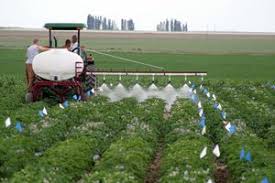
Methods of fertigation
Modern fertigation should be able to regulate:
quantity applied
duration of applications
proportion of fertilisers
starting and finishing time.
Four systems are generally used:
1 - Continuous application. Fertiliser is applied at a constant rate from irrigation start to finish. The total amount is injected regardless of water discharge rate.
2 - Three-stage application. Irrigation starts without fertilisers. Injection begins when the ground is wet. Injection cuts out before the irrigation cycle is completed. Remainder of the irrigation cycle allows the fertiliser to be flushed out of the system.
3 - Proportional application. The injection rate is proportional to the water discharge rate, e.g. one litre of solution to 1000 litres of irrigation water. This method has the advantage of being extremely simple and allows for increased fertigation during periods of high water demand when most nutrients are required.
4 - Quantitative application. Nutrient solution is applied in a calculated amount to each irrigation block, e.g. 20 litres to block A, 40 litres to block B. This method is suited to automation and allows the placement of the nutrients to be accurately controlled.

Injection methods and equipment
The selection of the correct injection equipment is just as important as the selection of the correct nutrient. Incorrect selection of equipment can damage parts of the irrigation equipment, affect the efficient operation of your irrigation system or reduce the effectiveness of the nutrients.
The three usual methods of injection are:
* suction injection
* pressure differential injection
* pump injection.
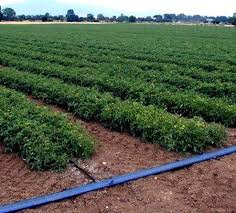
Suction injection
Suction of fertiliser through the intake of the pump is a common method of application and is the simplest method. The pumping unit develops a negative pressure in its suction pipe (unless the suction is flooded). This negative pressure can be used to draw fertiliser solutions into the pump. A pipe or hose delivers the fertiliser solution from an open supply tank to the suction pipe. The rate of delivery is controlled by a valve. This connection must be tight to prevent air entry into the pump.
Another hose or pipe connected to the discharge side of the pump can fill the supply tank with water. A high-pressure float valve can be used to regulate this inflow into the tank.
If necessary the system can be automated with a direct-acting solenoid valve. For multiple block usage, two or more tanks can be set up in series and operated when required.
Advantages
Very simple to operate; a stock solution does not have to be premixed.
Easy to install and requires little maintenance.
Ideal for dry formulations.
Disadvantages
Concentration of solution decreases as fertiliser dissolves, placing most of the nutrients below the effective root zone if tank is operated when irrigation is commenced.
Proportional fertigation is not possible unless several tanks are used.
Limited capacity.
Danger of suction air entering the pump unless all fittings are airtight.
Risk of corrosion of pump bowl. Flushing the system is necessary.
Risk of contamination of water supply if chemicals flow back down suction pipe when pumping unit stops. A check valve is necessary.
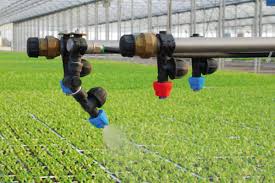
Pressure differential injection
A pressure differential tank system is based on the principle of a pressure differential being created by a valve, pressure regulation, elbows or pipe friction in the mainline, forcing water through a bypass pipe into a pressure tank and out again, carrying a varying amount of dissolved fertiliser.
Advantages
* Very simple to operate; a stock solution does not have to be premixed.
* Easy to install and requires little maintenance. Changing fertiliser is easy.
* Ideal for dry formulations.
Disadvantages
* Concentration of solution decreases as fertiliser dissolves, leading to poor placement of nutrients
* Requires pressure loss in main irrigation line.
* Tank must be able to withstand irrigation line pressure.
* Proportional fertigation not possible.
*Limited capacity.
*Accuracy of application is limited and determined by volume rather than by proportion.
A pressure differential venturi system can be installed as a bypass or inline. The venturi causes a rapid change in velocity producing a reduced pressure (vacuum) which draws the fertiliser solution into the line.
Injection rates of 2 litres to 3000 litres per hour can be achieved.
Advantages
Simple in design with no moving parts.
Easy to install, requiring little maintenance.
Fertiliser rates can be controlled with some accuracy.
Low labour, as a month’s supply of stock can be mixed in an inexpensive tank.
Low cost.
Disadvantages
* Quantitative fertigation is difficult.
* Requires pressure loss in main irrigation line (can be 33%).
* Automation is difficult.
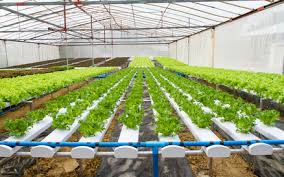
Pump injection
This is the most common method of injection of fertiliser into irrigation systems. Injection energy is provided by electric motors, impeller-driven power units and water-driven hydraulic motors.
The pumps are usually rotary, gear, piston or diaphragm-type which deliver fertiliser solution from the supply tank into the pressurised mainline. This method can be very accurate. Pumps are generally not simple in design and can include a number of moving parts, so wear and breakdown are more likely.
The three systems available are electric injection pumps, piston-activated pumps and diaphragm-activated pumps. Piston-activated and diaphragm- activated pumps are both hydraulic injection pumps; these dominate the fertigation market at present.
Electric injection pumps include single or multiple piston, diaphragm, gear and roller pumps.
These can be regulated to achieve the desired rate by:
These can be regulated to achieve the desired rate by:
* adjusting the length of the stroke of piston pumps
* selecting the appropriate pulley diameter
* using a variable-speed motor
* semi-automation to adapt pump to receive electrical impulses from a water meter which can then be used to apply precise amounts of fertiliser.
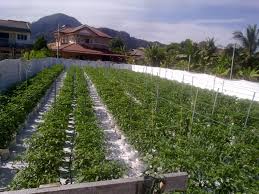
Advantages
* Simple and effective.
* Relatively easy to install and maintain.
* Either proportional or quantitative fertigation is possible.
* No pressure loss in the main irrigation line. Suitable for high head systems.
* Automation is relatively easy.
Disadvantages
* Pumps must develop a minimum mainline pressure to operate.
* Need electric power source to operate.
* Injection rate not easily adjusted.
Piston-activated pumps - in which irrigation water operates a hydraulic motor that pumps the fertiliser solution into the system. Since the pump’s maximum rate of injection is proportional to the pressure in the mainline, the required injection rate is easily adjusted by throttling the injection line by means of a valve fitted to the water main, and as the injection rate per pulse is known, the exact application of nutrients can be readily calculated. For high injection rates, two or more units can be operated in parallel. Injection rates of up to 320 litres/hour are possible.

Diaphragm-activated pumps - water pumped into the lower chamber activates a rubber diaphragm in the drive unit which forces the diaphragm up, and in doing so via a drive rod, forces the fertiliser out of the injector into the irrigation system. On the return stroke the spent drive water is discharged from the lower chamber of the drive unit while simultaneously fertiliser solution is drawn into the injector. The cycle is automatically repeated. Injection rates from 3 litres to 1200 litres per hour are possible. There is an upper limit to the pressure available and they might not operate on high head systems.
Advantages
Very simple to operate, install and maintain. Either proportional or quantitative fertigation is possible.
Rate of injection is easily adjustable.
System is easily portable between paddocks.
No pressure loss in main irrigation line.
Automation is very easy.
Not labour intensive.
Disadvantages
Large number of working components.
Sensitive to air pockets and needs a continuous water discharge to operate the piston or diaphragm. Pumps require a minimum line pressure.
Spent 'drive water' is lost and discharged from the system.
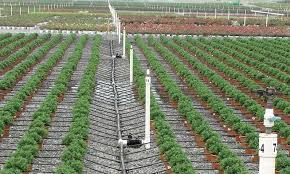
Management
The effectiveness of fertigation is often dependent on the effectiveness of the irrigation system. The full advantages of irrigation and fertigation only become evident if the correct irrigation design is employed to meet plant requirements and to distribute water and fertiliser evenly.
Because of the corrosive nature of many fertilisers, the components of the irrigation system that come into contact with corrosive solutions should consist of stainless steel, plastic or other non-corrosive materials. Concentrations of total nutrients in the mainline should not exceed 5 grams/litre. Always mix fertilisers in sufficient volume of water. The following formula can be used to determine the injection rate:
Maximum injection rate = (5 × Q × L) ÷ (F × 60)
where:
Q = irrigation pump discharge in litres per second
L = fertiliser tank volume in litres
F = amount of fertiliser in grams
For each crop there are many fertiliser programs. Fertigation allows you to change your program during the growing season, adjusting it to suit fruit, flower, shoot and root development. A program should be developed on the basis of leaf and soil analysis and tailored to suit your actual crop requirements.
The majority of injectors available today can generally incorporate automatic operation by fitting pulse transmitters which convert injector pulses into electric signals. These signals then control injection of preset quantities or proportions relative to flow rate of the irrigation system.
Injection rates can also be controlled by flow regulators, chemically resistant ball valves or by electronic or hydraulic control units and computers.
If fertilisers are not completely dissolved and mixed prior to injection into the system, this may result in varying concentrations applied or blockages within the system.
Suitable antisiphoning valves or non-return valves should be installed where necessary to prevent backflow or siphoning of water, fertiliser solution, chemical solution etc. into fertiliser tanks, irrigation supply, household supply, stock supply and so on.
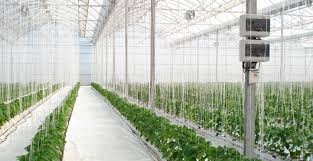
System hygeine
Fertigation increases the quantity of nutrients present in an irrigation system and this can lead to increased bacteria, algae and slime in the system. These should be removed at regular intervals by injection of chlorine or acid through the system.
Chlorine injection should not be used while fertiliser is being injected into the system as the chlorine may tie up these nutrients making them unavailable to the plant.
Systems should always be flushed of nutrients before completion of irrigation.
Before commencing a fertigation program, check fertiliser compatibilities and solubility.
During the irrigation season it is important to monitor:
pH effects over time in the root zone
soil temperature effect on nutrient availability
corrosion and blockages of outlets
reaction with salts in the soil or water.
SOLVER CHEM
If you need any manufacturing formulas and production methods about
liquid and powder fertilizers,
CHEMICAL
FERTILIZERS
FORMULATIONS
ENCYCLOPEDİA
is enough.
This encyclopedia has many formulas about NPK fertilizers,NP fertilizers,liquid poliar fertilizers, powder fertilizers, granulas fertilizers, micro nutrients fertilizers,macro nutrients fertilizers,chelated fertilizers etc.
All chemical fertilizers in the encyclopedia are producible easily.You need no help and no technıcal support. The encyclopedia is enough to produce chemical fertilizers itself.
CHEMICAL
FERTILIZERS
FORMULATIONS
ENCYCLOPEDIA
is written clear and understandable.
RELATED TAGS: What is fertilization, fertilizing varieties, fertilization methods, fertilization agriculture, fertilizer plants, fertilization techniques, fertilizer equipment, fertilizer injection, fertilizing use,how to make fertigation,making fertilization,properties of fertigation,types of fertilizing,fertilizing plants,fertigation soil,when to make fertilization,why to use fertilizing,effects of fertilization,developing of fertigation,technology of fertilization,importance of fertigation,functions of fertilization,essential role of fertigation,time of fertigation,usage of fertilization,application of fertigation,advantages of fertilizing,fertilization of fruits,fertigation of vegatables,to make fertilization,to apply fertigation, systems of fertigation,benefits of fertigation for plants,what is irrigation,methods of irrigation,when to do irrigation,what is modern fertigation,properties of modern fertilization,duration of application of fertigation,continuous application of fertigation,advantages of continuous application of fertilization,three stage application methods,what is enjection for fertigation,enjection methods of fertigation.
liquid and powder fertilizers,
CHEMICAL
FERTILIZERS
FORMULATIONS
ENCYCLOPEDİA
is enough.
This encyclopedia has many formulas about NPK fertilizers,NP fertilizers,liquid poliar fertilizers, powder fertilizers, granulas fertilizers, micro nutrients fertilizers,macro nutrients fertilizers,chelated fertilizers etc.
All chemical fertilizers in the encyclopedia are producible easily.You need no help and no technıcal support. The encyclopedia is enough to produce chemical fertilizers itself.
CHEMICAL
FERTILIZERS
FORMULATIONS
ENCYCLOPEDIA
is written clear and understandable.
RELATED TAGS: What is fertilization, fertilizing varieties, fertilization methods, fertilization agriculture, fertilizer plants, fertilization techniques, fertilizer equipment, fertilizer injection, fertilizing use,how to make fertigation,making fertilization,properties of fertigation,types of fertilizing,fertilizing plants,fertigation soil,when to make fertilization,why to use fertilizing,effects of fertilization,developing of fertigation,technology of fertilization,importance of fertigation,functions of fertilization,essential role of fertigation,time of fertigation,usage of fertilization,application of fertigation,advantages of fertilizing,fertilization of fruits,fertigation of vegatables,to make fertilization,to apply fertigation, systems of fertigation,benefits of fertigation for plants,what is irrigation,methods of irrigation,when to do irrigation,what is modern fertigation,properties of modern fertilization,duration of application of fertigation,continuous application of fertigation,advantages of continuous application of fertilization,three stage application methods,what is enjection for fertigation,enjection methods of fertigation.
AGRICULTURE ENCYCLOPEDIAS AND CONTENTS
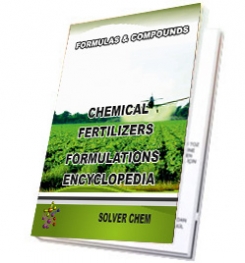
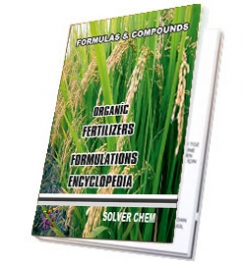
OPPORTUNITIES
1 ENCYCLOPEDIA 165 $
2 ENCYCLOPEDIAS 300 $
ORDER NOW
AGRICULTURE ENCYCLOPEDIAS AND VIDEOS


OPPORTUNITIES
1 ENCYCLOPEDIA 165 $
2 ENCYCLOPEDIAS 300 $
ORDER NOW
AGRICULTURE ENCYCLOPEDIAS AND VIDEOS
SOLVER CHEM

|
|
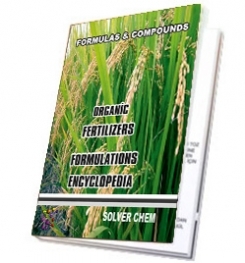
|
|
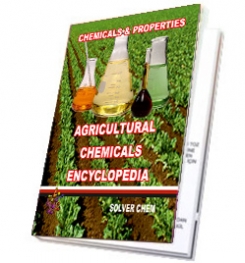
|
|
